What should become one of Belgium’s premier breweries and brewery cafes, Brouwerij Den Herberg of Buizingen, in the Province of Flemish Brabant, has just been given the great honor of joining HORAL, The High Council for Artisanal Lambic Beers. Den Herberg has been making great lambics for several years now, and just released their first Oude Geuze in 2020. More on that below…
Den Herberg’s founders, husband and wife team Bart Devillé and Ann Heremans, did not take the usual path to get to this point. While most new lambic producers, whether they be brewers of their own lambic, or blending the wort of other lambic breweries, go right to making lambic, and only lambic, this was not the case with Den Herberg.
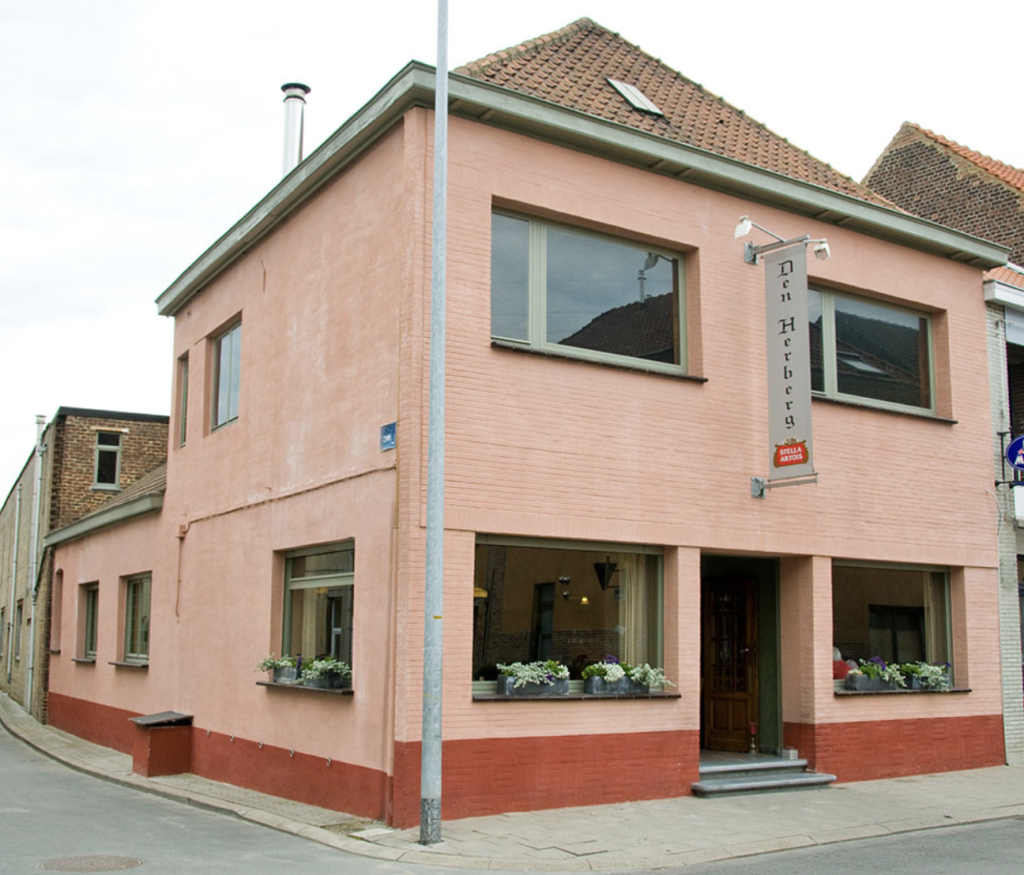
“I originally wanted to take my family and move to France, and be a winemaker,” Bart says. “But my wife talked me out of that. We had five children, and she felt it was less risky to stay in Belgium. So, we took a class in beer making with Peter Croonenberghs. We started in our kitchen, using old soup kettles, making 200 liter batches of beer. People really liked our brews, so we decided to expand,” Bart continued. Note that it was five children at the time, and Ann and Bart now have seven.
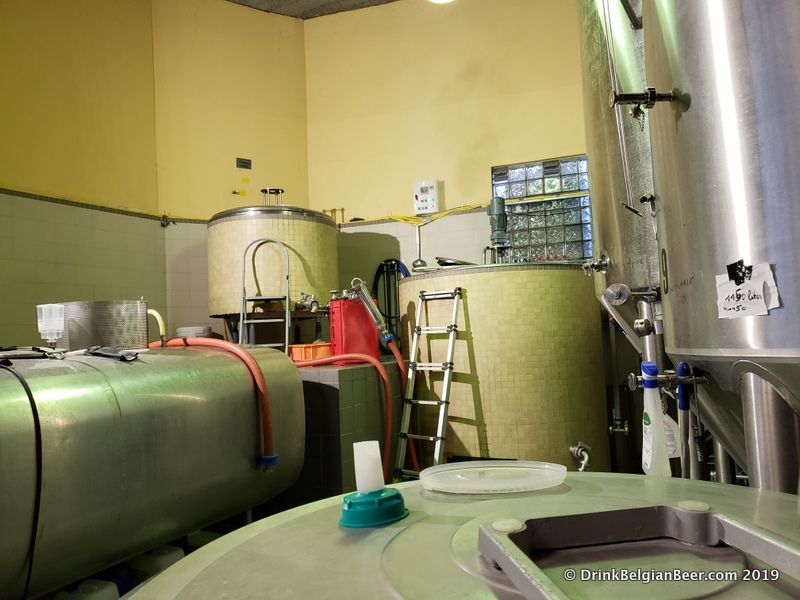
“We bought our current building in the year 2000. It was originally meant to be a storage facility, but we converted it to a brewery. I was able to source second-hand dairy equipment to build a brewery,” Bart commented.
The Den Herberg cafe/bar actually opened before the brewery, in 2007. “Ann and our eldest son Akke worked behind the bar in the early days,” Bart says.

The brewery officially opened on February 1, 2008, with a Blonde being the first beer. The range of beers then expanded, and there were four brews: Amber, Blond, Bruin, and Tarwe (wheat.) When I first visited Den Herberg in February, 2011, these four beers were available. The pub also had a solid selection of lambic beers, such as from Boon, Girardin, Hanssens, and Oud Beersel, as well as a good choice of Trappist and regional brews.
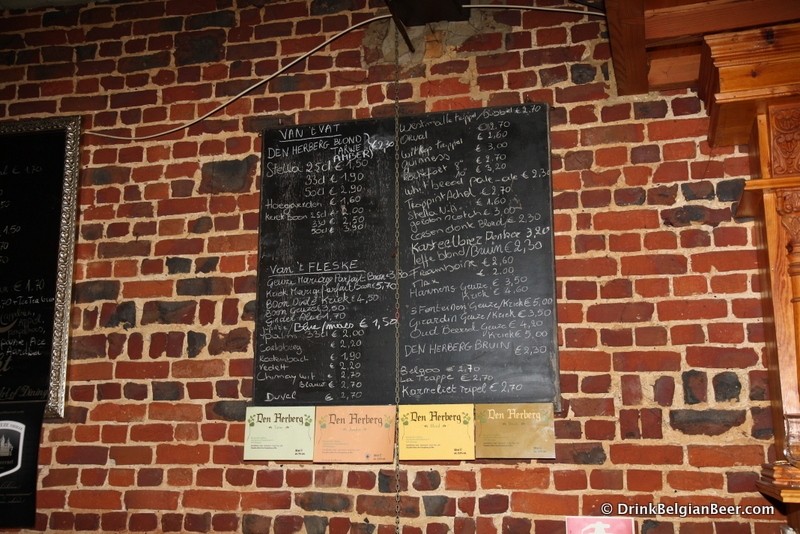
Kloris Devillé, the youngest son, and his older brother Akke were already helping out when Bart and Ann were still brewing in their kitchen. Kloris says: “I remember crushing malts by hand with a small mill, weighing the hops, taking out the spent grains, picking cherries, and bottling. It was not on a regular basis, but yet I had my first ‘brew experiences’ at about nine years old.”
That is a good way to start the life of being a brewer!

Kloris, who was one of the brewers at the venerable Brouwerij Timmermans lambic brewery in Itterbeek beginning in 2013, actually took a different path initially: he studied classical piano at a conservatory, Conservatoire Royale de Bruxelles. This music school is widely regarded as the most prestigious in Belgium.

Kloris graduated from the music school with a Bachelor’s degree in 2012. But finding work as a pianist proved difficult, so he considered other options. After spending six months in Australia with his girlfriend, he returned and took a job in sales at the Anthony Martin Group in 2013, and then became a brewer at Timmermans later that year.
Kloris also brewed and distilled at one of the other breweries in the Anthony Martin Group, at Brasserie de Waterloo, near the famous battlefield, on the site of Wellington’s Field Hospital, La Ferme de Mont Saint-Jean.
I covered Brasserie de Waterloo in this previous article here.
“As to my training, I took a brewing classes in Ghent with Peter Croonenberghs and Luc Pauwels in 2011, and I was in same class with Thomas Vandelanotte, and we both have worked for Anthony Martin for years. I also took distilling classes in 2013,” Kloris commented.
Kloris was promoted to production manager at Timmermans In September 2018. In September 2021, he then became a Project Manager for the Anthony Martin Group. “But most of my time, I am at Brouwerij Timmermans,” he remarked.
Bart Devillé and son Akke had wanted to create some “wild” ales for some time, and hoped to eventually brew lambic, being in the heart of lambic country. Beginning in late 2013, with Kloris’s help, they brewed “Cuvee Devillé” which is an amber colored ale brewed with Brettanoymces and Saccharoymces yeasts. They released this beer at the Zythos Beer Festival in 2014, and it quickly sold out. I was there, and it was a very popular brew. Luckily, it is now a regular brew in the Den Herberg lineup.
Note that the ZBF will be held at Leuven’s Brabanthal this year, on April 23-24. There will be over 700 beers on offer! Zythos Beer Fest is Belgium’s largest festival for artisanal beers, and one of the world’s premier beer events.
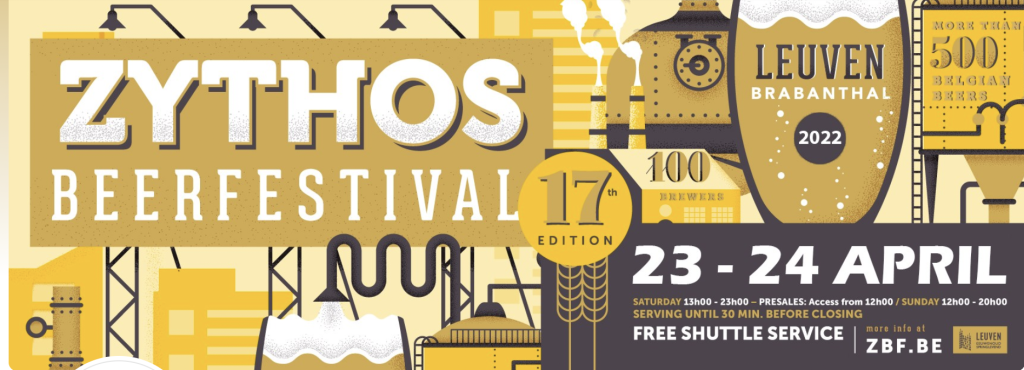
Den Herberg brewed a number of delicious and well-received wild ales after Cuvee Devillé, which convinced them that brewing lambic would likely be both commercially successful, and rewarding to them as brewers. “We brewed our first batch of lambic on Christmas Eve, 2016,” Kloris remarked. “We pumped it into a number of barrels at our lambic warehouse, and waited. Then, we tasted it in May of 2017. To be honest, we were not very pleased with it at first. But, in about 18 months time, it had changed completely. For the better,” Kloris added.
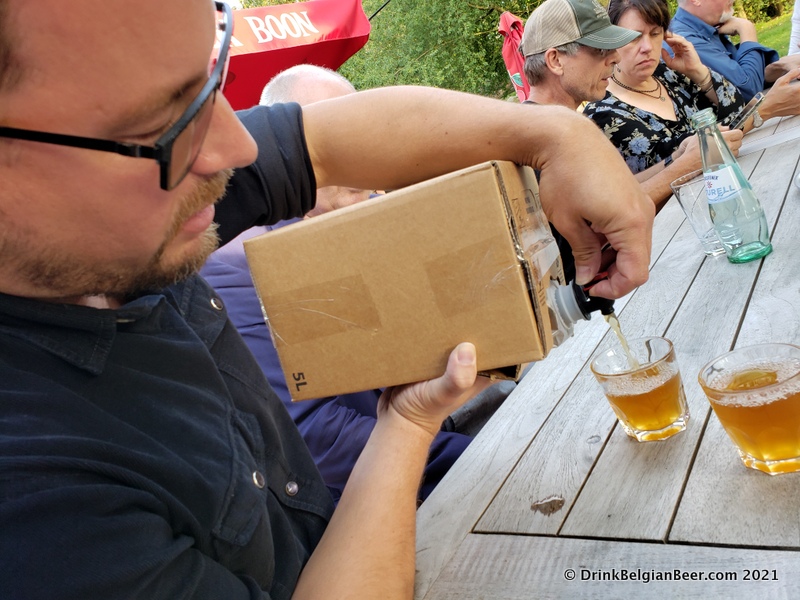
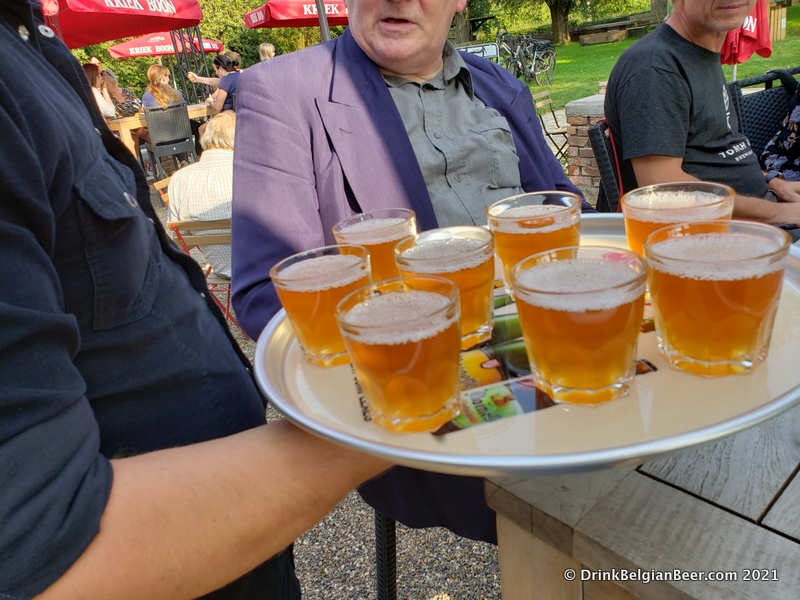
The lambic was released to the media, and then the public, in July 2018, and was very well received. “Other lambic brewers, such as Armand Debelder, Willem van Herreweghen, and Frank Boon complimented our new lambic, and gave words of encouragement,” Kloris remarked. Den Herberg’s lambic was first released in 5 liter bag-in-box format, and is still available in this type of container, which is common for straight lambic beers.
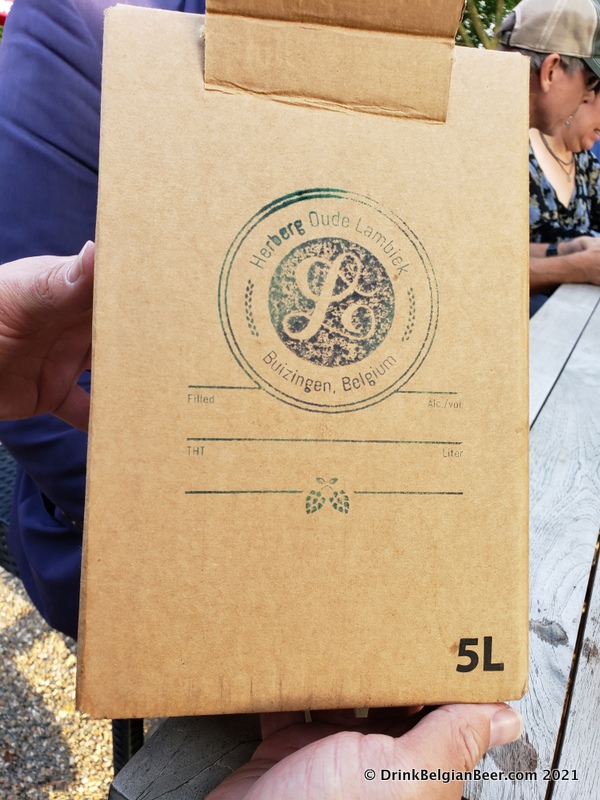
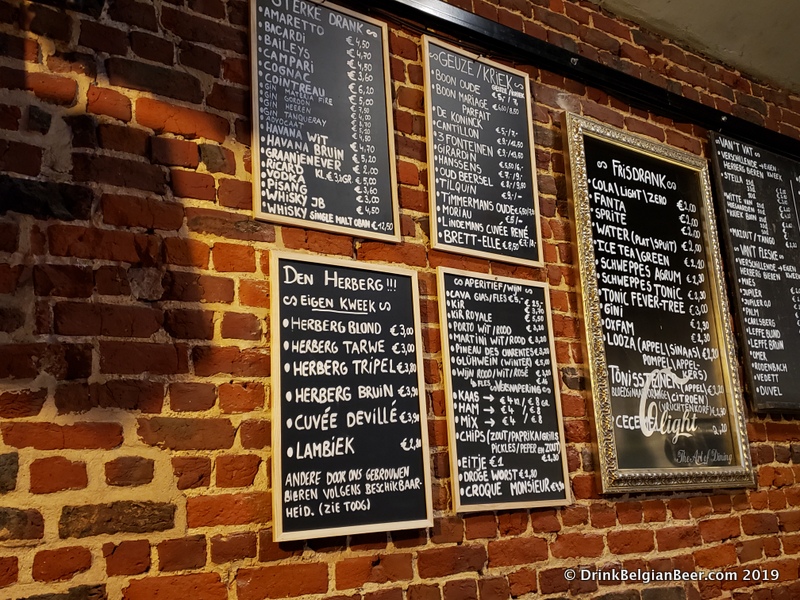
When I visited in May, 2019, Bart showed my group, from the “The Wild & Spontaneous Beer Tour of Belgium” how the lambic brewing process works. The wort for the lambic is brewed in a similar way as other lambic breweries, with at least a four hour boil. The wort is then pumped into a mobile stainless steel coolship, with a capacity of 18 hectoliters, which was added in October 2020. The wild yeasts and bacteria that exist naturally in the air in Belgium’s lambic country infect the wort as it cools overnight. “We had thought to put the coolship on the roof here, but for now, we just take it to our farm in Lembeek for storage off-season, as we are very short of space here in Buizingen,” Kloris says.
Like at the other lambic breweries, brewing is only done in winter, when the low temperature for the night will be below about 40 degrees Fahrenheit. Later, the cooled wort is pumped into 10-hectoliter plastic containers, and transported to the barrel room on Den Herberg’s farm in Lembeek, and pumped into barrels there.
Den Herberg’s farm also has a seven acre orchard with 400 Schaarbeekse cherry trees. The cherries from these trees will be used to make fruited lambic in the future.
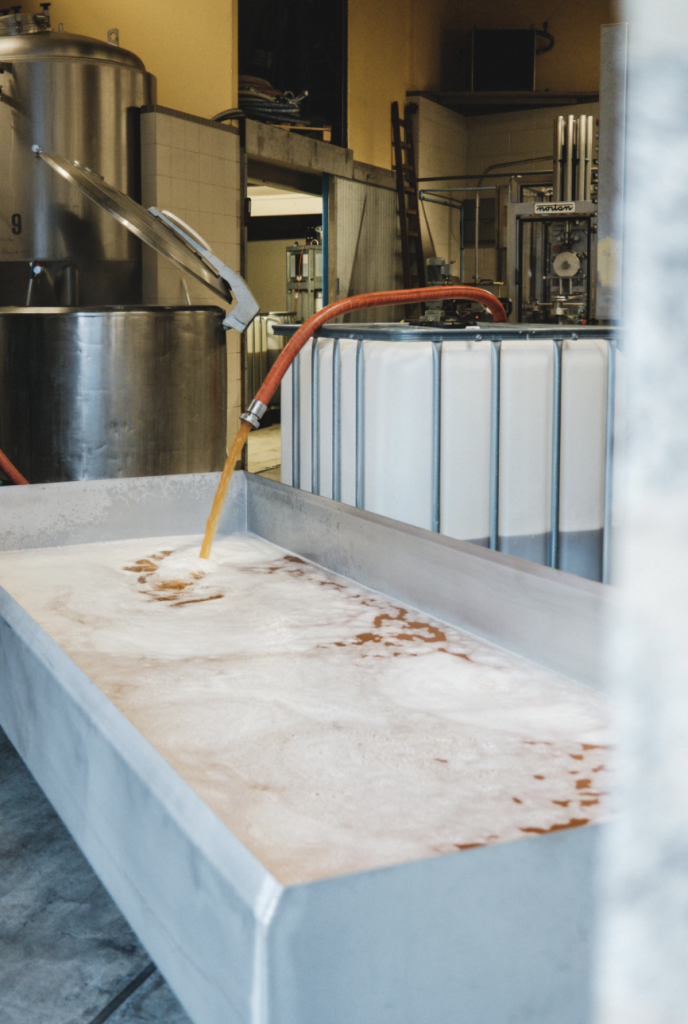
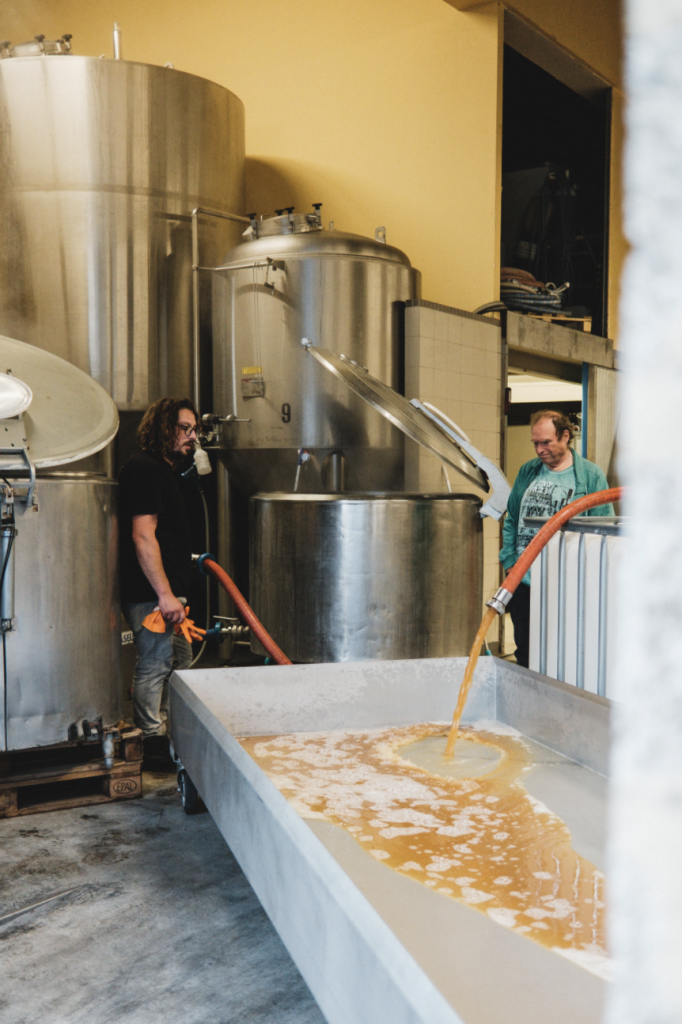
“We leave the garage door partially open, so the cold air can come in, and with it, the yeasts and bacteria,” Bart says. Later, the wort is transferred to oak barrels for maturation. While we have a few barrels on site here in Buizingen, most of our stock of lambic is housed at our lambic warehouse in Lembeek,” Bart says.
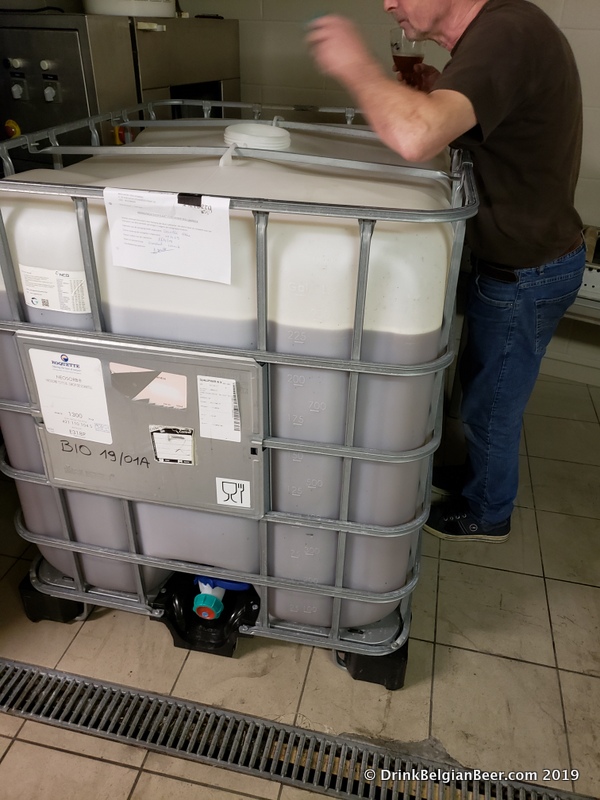
Kloris recently gave me an update about their current lambic stock, production, and sales: “We have about 200 hl of lambic in barrels here at the brewery/cafe, and about 850 hl maturing in Lembeek. Also, the brewery produced about 1,500 hl of beer in 2021, with about 600 hl of that being lambic. We sold 300 hl of lambic/wort and 150 hl of Oude Geuze Devillé à l’Ancienne in 2021,” he remarked.
Den Herberg has mostly 400-liter barrels made of American and French oak. The brewery may add some foeders soon.
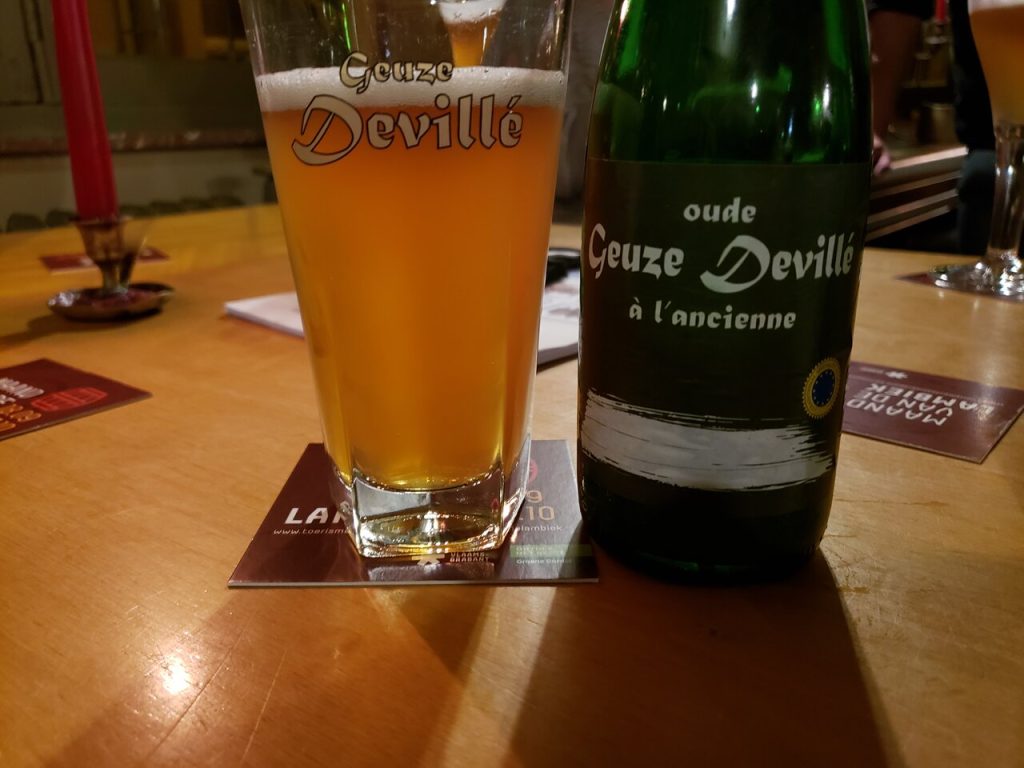
I found Den Herberg’s oude geuze to be one of my favorite new beers of 2021. It is very refreshing, with a low to medium acidity, notes of green apples, and a light barnyard funk. It is a very refreshing and well-balanced geuze, which is a great achievement for a first try at this style. In other words, Den Herberg nailed it.
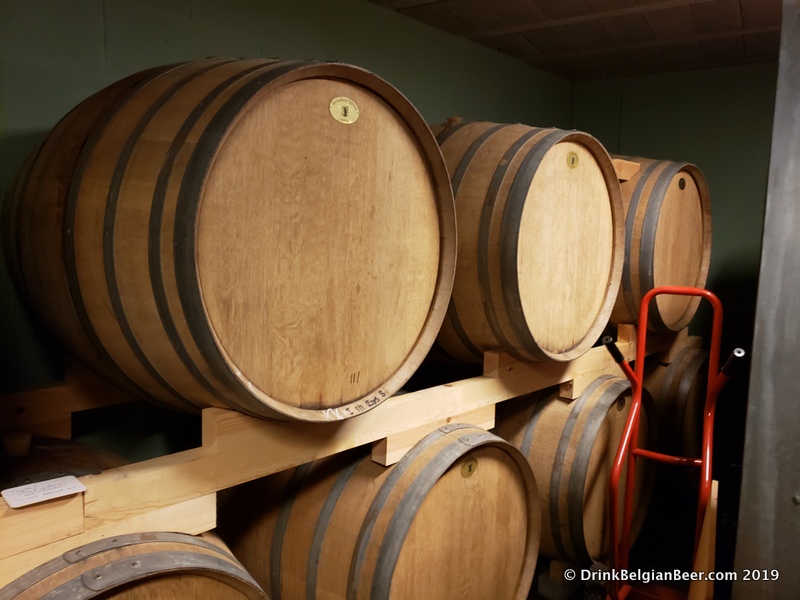
In fact, the first batch of the oude geuze was so popular that it sold out in just a few weeks time. Also, Den Herberg’s lambic is available to go in 5 liter bag-in-box format. In fact, rumor has it that some Belgian beer shops will even ship these internationally…
Lambic blenders Bofkont and Bokke, and Brouwerij Sako, also use Den Herberg’s lambic in some of their beers, as do a number of other lambic producers. It is regarded as a high-quality lambic. Kloris added: “We also supply wort to Lambiek Fabriek (BIO) since this season; for Kestemont (BIO) and for D&D (Driesen en Decoster) (regular) and for restaurant De Smidse in Alsemberg.”

Note that De Smidse is one of the great beer focused restaurants in Belgium’s Payottenland and Zenne Valley. I have eaten and drank there many times, and highly recommend it!
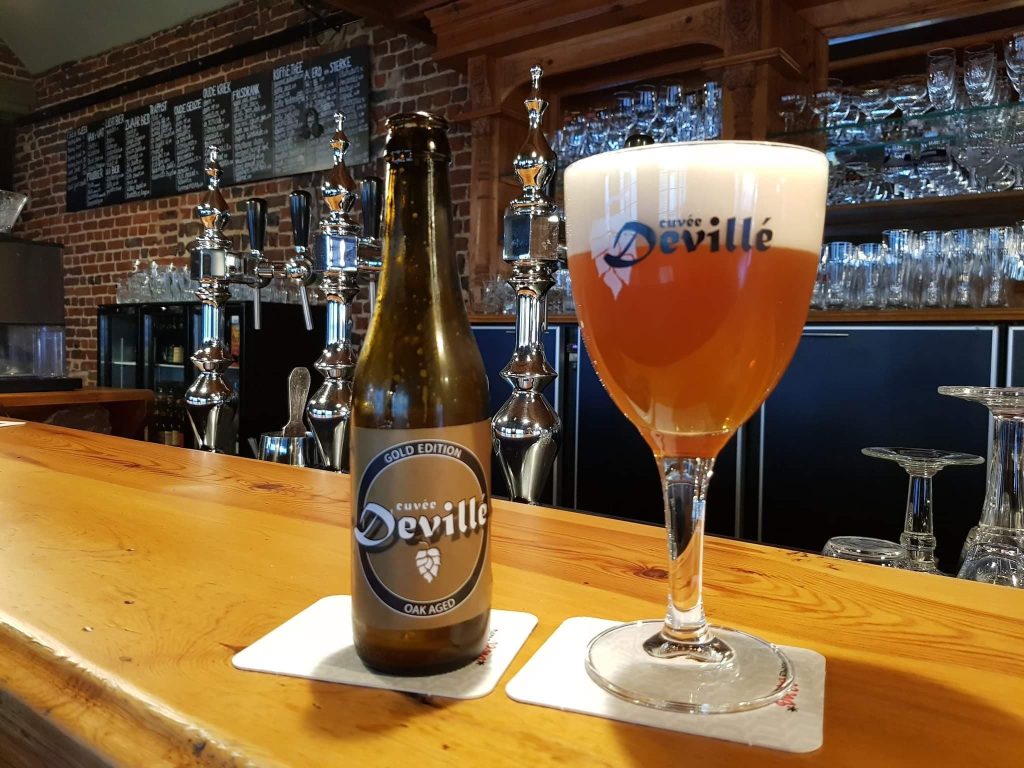
Bart, Kloris, and Akke decided to create a new version of Cuvee Devillé, the Gold Edition, in 2020. I tasted this brew at Cafe ‘t Paddenbroek in September 2021, and delicious it was. Kloris had this to say: “It is an amber colored beer with mixed fermentation, with the same culture of Brettanomyces yeast as the ‘normal’ Cuvée, together with top fermentation Saccharomyces yeast.”
Kloris added: “Although it’s a very dry beer, it has full body thanks to its complexity, resulting from the brett yeasts, and barrel aging. As we thought the Cuvée had a good and nice aging profile, we wanted to test aging on oak casks. So we let it age for 2 years on oak, with refermentation in the bottle afterwards. So the beer is still evolving in the bottle (eg, is bottle-conditioned) and this beer is very complex, but balanced. In the nose, we find hints of oak, vanilla, and malt. It is on the tongue that the typical brett flavors are evident. Also, even though the Gold Edition has 8% abv, it has a good drinkability, thanks to a very slight acidity. In the finish, we perceive subtle oak aromas.”
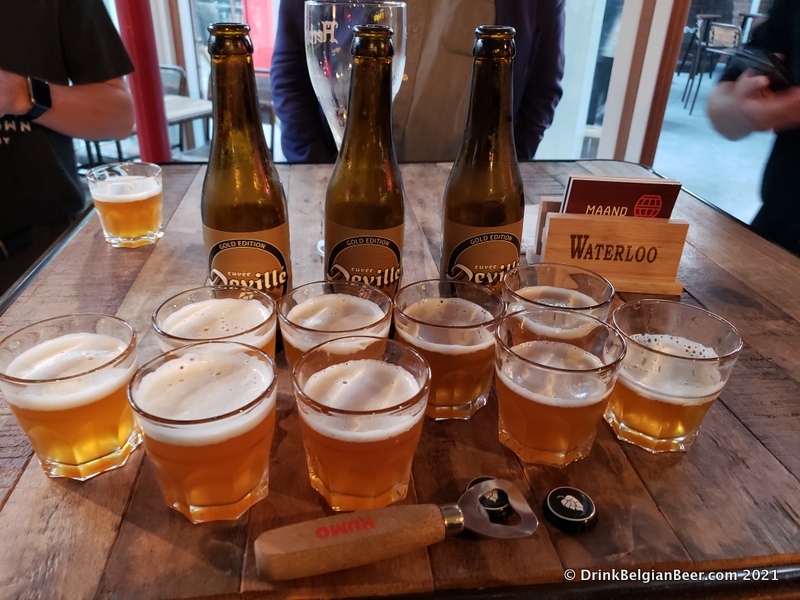
Roel Janssens, Manager of ‘t Paddenbroek, is a first cousin of Kloris and Akke Devillé, and nephew to Bart Devillé. Roel had this to say about Den Herberg: “Since 2017, the lambic world has become a richer place in terms of lambic producers, more specifically the one of Devillé, from brewery Den Herberg. As a family member, I naturally promote this fantastic product. It has a nice oaky nose, the taste and long maturing on these nice barrels come into its own.”
Roel continued: “The last editions of their lambic batches that I tasted (aged two to 2.5 years) are real superstars. Their first Oude Geuze was released in August 2020. It was bottled in February 2020. It has a nice balanced acidity and is very refreshing. It is the best selling geuze in our pub.”
Roel added: “Everyone at the press presentation in August 2020, including Frank Boon, were extremely enthusiastic about this first blend from the Devillé family. In the meantime, the brewery has recently and rightfully become a member of the Horal: The High Council for Artisanal Lambic Beers. In addition to the Lambic beers, the brewery also brews other beer. They do all types of fermentation, top fermentation, bottom fermentation, spontaneous fermentation, and mixed fermentation.”
Roel says: “In this last category belongs their Cuvée Devillé: an amber-colored beer which is sometimes compared to Orval. Personally, I do find Cuvée Devillé a bit softer, more accessible, and tastier. Is this prejudice because it was made by my family? No! It is simply a top product, and highly sought after by our customers at café Paddenbroek.”

Den Herberg’s lambic and oude geuze have been so well received by the lambic community that the brewery was given the honor of being accepted as a new member of HORAL on January 14, 2022, by a unanimous vote of the council.

HORAL was founded in 1997, and is a non-profit organization comprised of most of the lambic producers in the Payottenland and the Zenne River Valley. Gert Christiaens, president of HORAL, had this to say: “The main objective of the association is the promotion of traditional lambic beers, in particular Oude Geuze and Oude Kriek. The association also takes initiatives to protect these beers. Every two years HORAL organizes the Toer de Geuze, the open brewery day of the Pajottenland and the Senne valley. The next edition will be on April 30 and May 1st, 2022.”
Den Herberg will be open and participating in Toer de Geuze this year. For more info on Toer de Geuze, see here.
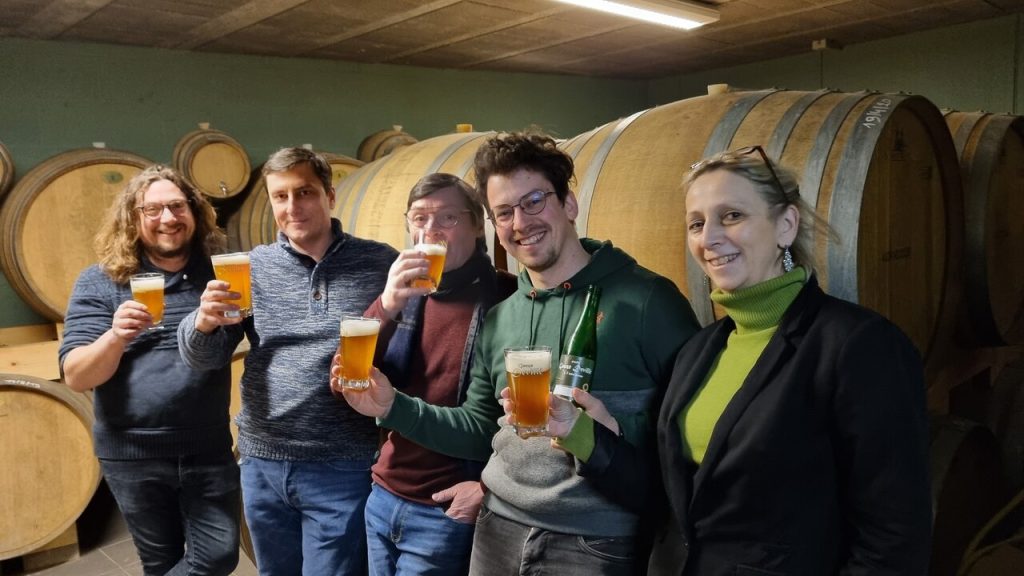
The current eleven lambic-producing members of HORAL are: Brouwerij Boon, De Oude Cam, Hanssens, Brouwerij Den Herberg, Brouwerij Lindemans, Brouwerij Mort Subite, Oud Beersel, Gueuzerie Tilquin, Brouwerij Timmermans, Brouwerij De Troch, and Lambiek Fabriek.

HORAL chairman and Oud Beersel brewery and cafe owner Gert Christiaens had this to say: “The general meeting of our non-profit organization unanimously approved the entry of the Den Herberg brewery last night. It is clear that the last 10 years have seen a remarkable rejuvenation in the sector. Several new producers were added. Tilquin joined our association in 2012, followed by Lambiek Fabriek two years ago. We observe this rejuvenation dynamic not only on the producer side, but also among consumers. Oude Geuze, Oude Kriek and other lambic beers are once again appreciated by adults of all ages.”
For anyone interested in visiting Brouwerij Den Herberg, as well as many other places, and Toer de Geuze itself, Belgian Beer Me! Beer Tours of Belgium is hosting the “Wild & Spontaneous Beer Tour of Belgium” from April 25-May 2, 2022, and will visit this superb new lambic producer. See here for more details.
For information about tourism in the Province of Flemish Brabant (Vlaams Brabant) see their website here.
OK, so that is a lot about lambic and wild ales. Rightly so, in this case. But, there is more to Brouwerij Den Herberg than that. Their classic Belgian styles are also very well done. I am a big fan of their Tripel, a fruity, dark blonde beer of 8% abv; as well as their Bruin, a dark brown strong ale with 9% abv. They also have several other beers.

The cafe itself is a great beery destination. They have events and live music frequently, and it is one of most popular spots in the village of Buizingen, which is on the outskirts of Halle, a historic market town ten miles from Brussels. The drinks are served by Charlien and Roxan Devillé, two of the daughters of Ann and Bart. The cafe continues to carry a large selection of guest beers, with many lambics and Trappist brews on offer, as well as their own house brewed ales. Cocktails and other adult beverages are available too, as well as small snacks.

The opening days and hours of the cafe are: Monday-Thursday: 11 am till 1 am; Friday-Saturday: 11am till 3am; and Sunday: 11 am till 1 am. The address of the cafe and brewery are: Oct de Kerchove d’Exaerdestraat 16, (post code 1501) Halle, Belgium. The telephone number is 32 23083656. From the train station of Halle, it is about 1.5 km north, or a walk of about 17 to 20 minutes. You could also possibly take a taxicab from the Halle train station if you do not want to walk.
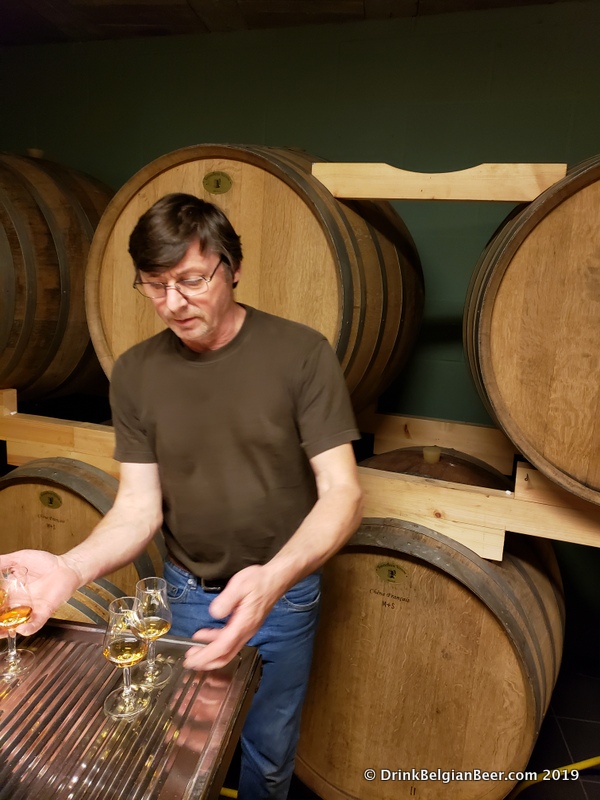
And, as if the lambic and other Den Herberg beers was not enough…there is whisky. Belgian whisky. When I visited in 2019, Bart let me taste a couple of samples of a whisky distilled at Stokerij De Moor in Aalst. They distilled spirit was then added to two different oak barrels at Den Herberg. Bart commented that the alcohol percentage was 62 or 63% abv. This delicious beverage reminded me of tasting some mellow, cask strength bourbons.
Kloris remarked: “The first batch, just those two barrels of 225 liters each that you saw, was distilled at Stokerij De Moor in Aalst. It is an old traditional craft distiller. So for the first batch of the whisky, we have about 400 liters. From subsequent batches distilled at De Moor and De Cort Belgian Farm Distillery in Pepingen, we have about 3,000 liters of whisky in barrels.”
When I returned in September 2021, I was again able to taste these two whiskys, with some age on them. Once again, I loved both versions. “We will probably blend the whiskys from the two barrels together, and release that in bottles. We think it could be plus or minus 800 bottles in the 50 cl size. We have not decided on a name yet.”
I look forward that bottle release, which should happen sometime this spring.
Cafe and Brouwerij Den Herberg are life enhancing places that should be on the bucket list of every lambic beer lover!
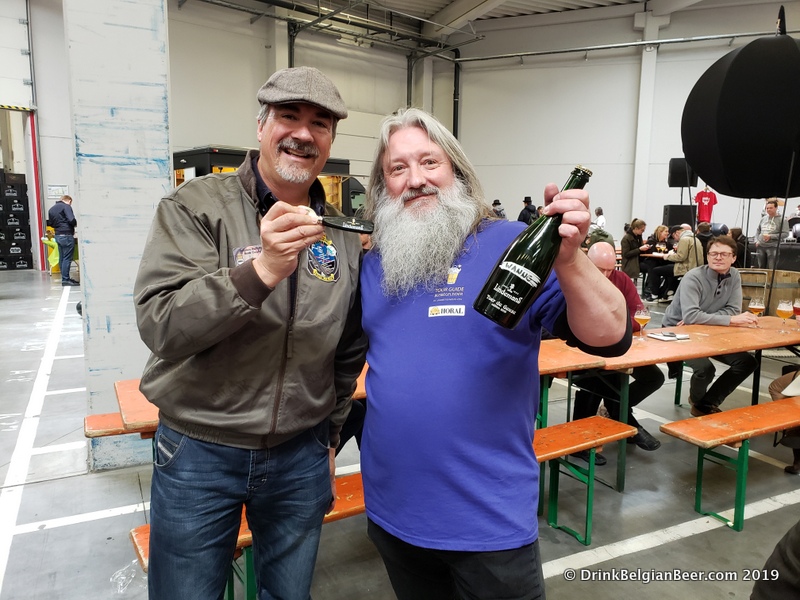
Also, many thanks to Johan “Wanne” Madalijns, President of De Lambikstoempers, the premier Zythos-affiliated beer appreciation and promotion club in Belgium’s lambic country, which organizes several events throughout the year. Wanne is an ambassador of Belgian beer, and lambic especially. Wanne has driven me to countless lambic producers and lambic specialty cafes over the years, and his help has been invaluable, along with that of his peers in the De Lambikstoempers club.
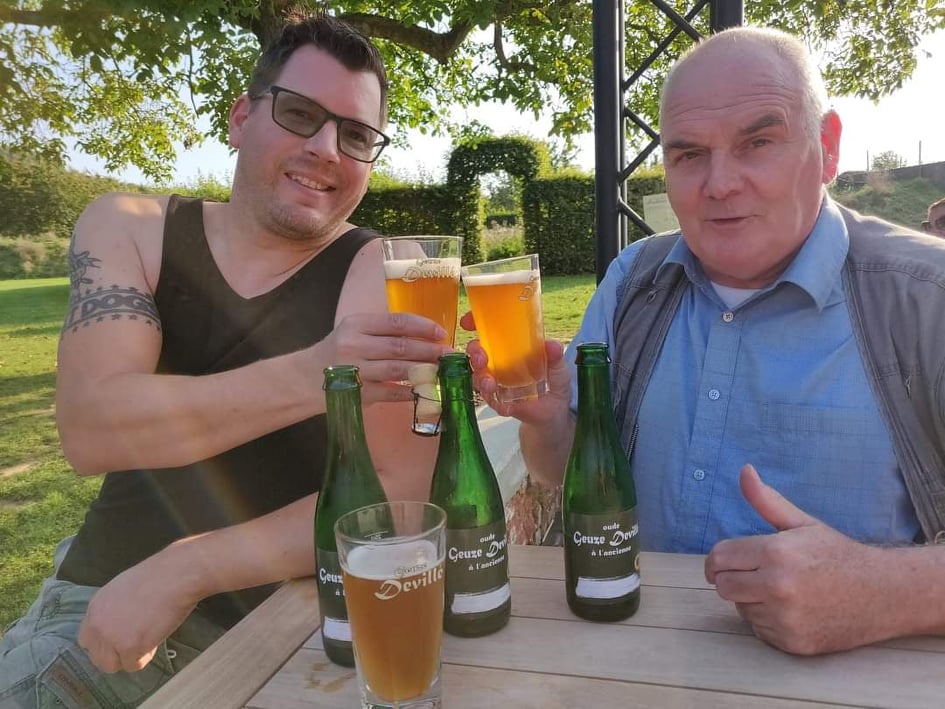

Special thanks also to Patrick Van der Spiegel of “The Land of Geuze” and “Lambic Beer Tours” lambic beer aficionado and expert tour guide. Patrick knows lambic beer, and has also driven me to countless lambic destinations over the course of many years. As a resident of Halle, ten miles southwest of Brussels in Belgium’s lambic country, he has lived his life savoring and enjoying lambic. Patrick has two projects, “The Land of Geuze” and “Lambic Tours” which both have Facebook and Instagram pages. The Lambic Tours website is here.


Leave a Reply